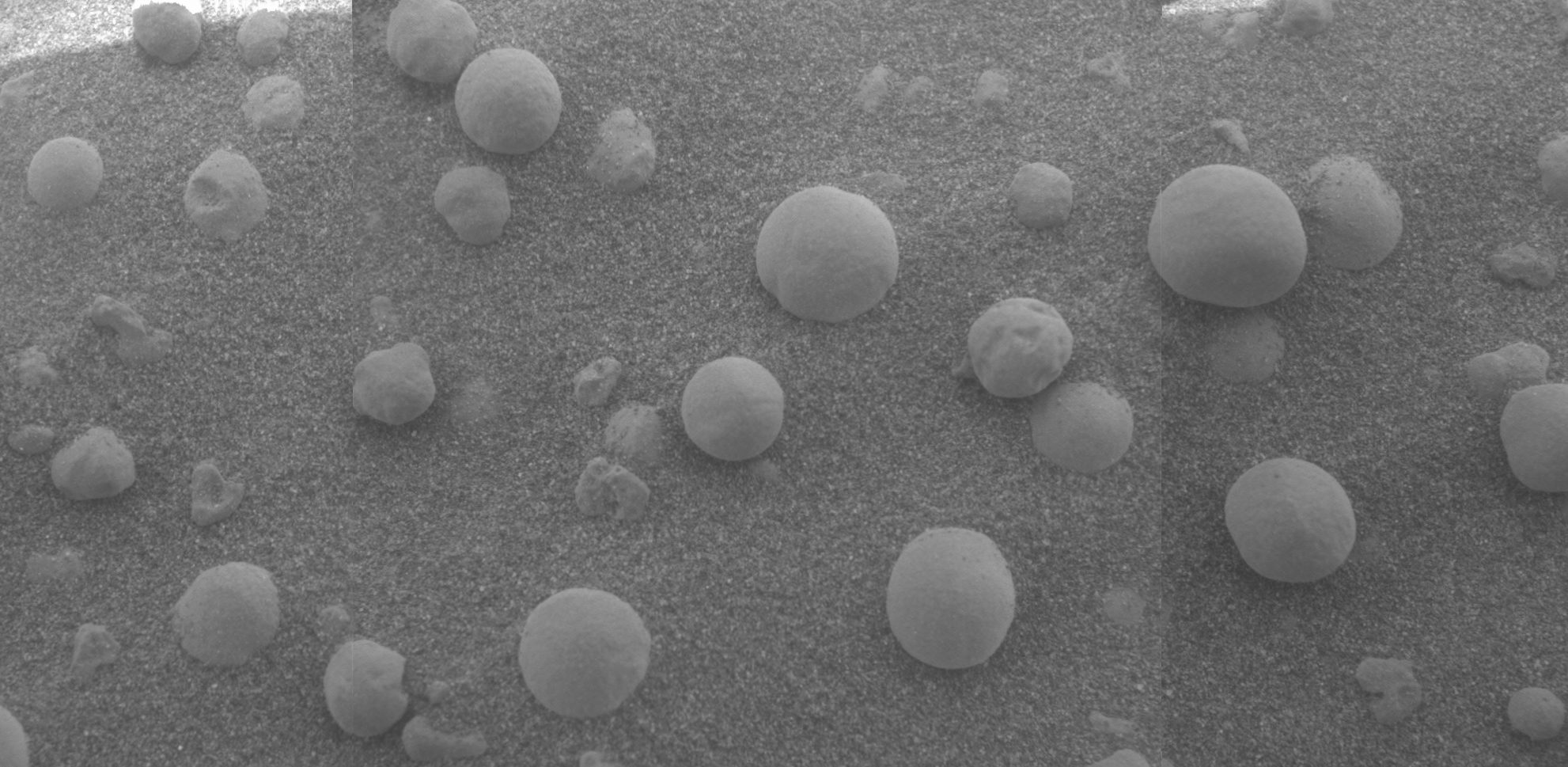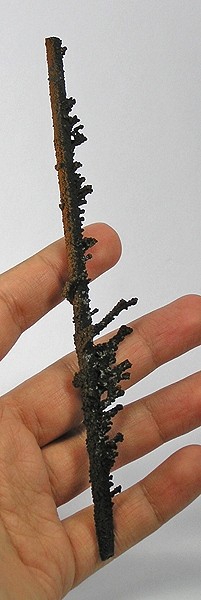|
Red Mud
Red mud, now more frequently termed bauxite residue, is an industrial waste generated during the processing of bauxite into alumina using the Bayer process. It is composed of various oxide compounds, including the iron oxides which give its red colour. Over 97% of the alumina produced globally is through the Bayer process; for every tonne () of alumina produced, approximately of red mud are also produced; the global average is 1.23. Annual production of alumina in 2023 was over resulting in the generation of approximately of red mud. Due to this high level of production and the material's high alkalinity, if not stored properly, it can pose a significant environmental hazard. As a result, significant effort is being invested in finding better methods for safe storage and dealing with it such as waste valorization in order to create useful materials for cement and concrete.Evans, K., "The History, Challenges and new developments in the management and use of Bauxite Residue", ' ... [...More Info...] [...Related Items...] OR: [Wikipedia] [Google] [Baidu] |
Gibbsite
Gibbsite, Al(OH)3, is one of the mineral forms of aluminium hydroxide. It is often designated as γ-Al(OH)3 (but sometimes as α-Al(OH)3). It is also sometimes called hydrargillite (or hydrargyllite). Gibbsite is an important ore of aluminium in that it is one of three main phases that make up the rock bauxite. Gibbsite has three named structural polymorphs or polytypes: bayerite (designated often as α-Al(OH)3, but sometimes as β-Al(OH)3), '' doyleite'', and nordstrandite. Gibbsite can be monoclinic or triclinic, while bayerite is monoclinic. Doyleite and nordstrandite are triclinic forms. Structure The structure of gibbsite is interesting and analogous to the basic structure of the micas. The basic structure forms stacked sheets of linked octahedra. Each octahedron is composed of an aluminium ion bonded to six hydroxide groups, and each hydroxide group is shared by two aluminium octahedra. One third of the potential octahedral spaces are missing a central aluminiu ... [...More Info...] [...Related Items...] OR: [Wikipedia] [Google] [Baidu] |
Tricalcium Aluminate
Tricalcium aluminate Ca3Al2O6, often formulated as 3CaO·Al2O3 to highlight the proportions of the oxides from which it is made, is the most basic of the calcium aluminates. It does not occur in nature, but is an important mineral phase in Portland cement. Properties Tricalcium aluminate forms upon heating a 3:1 mixture of calcium oxide and aluminium oxide above 1300 °C. The crystals are cubic, with unit cell dimension 1.5263 nm and has density 3064 kg·m−3. It melts with decomposition at 1542 °C. The unit cell contains 8 cyclic Al6O1818− anions, which can be considered to consist of 6 corner sharing AlO4 tetrahedra. The structure of pure liquid tricalcium aluminate contains mostly AlO4 tetrahedra in an infinite network, with a slightly higher concentration of bridging oxygens than expected from the composition and around 10% unconnected AlO4 monomers and Al2O7 dimers. In Portland cement clinker, tricalcium aluminate occurs as an "interstitial phase ... [...More Info...] [...Related Items...] OR: [Wikipedia] [Google] [Baidu] |
Silica
Silicon dioxide, also known as silica, is an oxide of silicon with the chemical formula , commonly found in nature as quartz. In many parts of the world, silica is the major constituent of sand. Silica is one of the most complex and abundant families of materials, existing as a compound of several minerals and as a synthetic product. Examples include fused quartz, fumed silica, opal, and aerogels. It is used in structural materials, microelectronics, and as components in the food and pharmaceutical industries. All forms are white or colorless, although impure samples can be colored. Silicon dioxide is a common fundamental constituent of glass. Structure In the majority of silicon dioxides, the silicon atom shows Tetrahedral molecular geometry, tetrahedral coordination, with four oxygen atoms surrounding a central Si atomsee 3-D Unit Cell. Thus, SiO2 forms 3-dimensional network solids in which each silicon atom is covalently bonded in a tetrahedral manner to 4 oxygen atoms. ... [...More Info...] [...Related Items...] OR: [Wikipedia] [Google] [Baidu] |
Hematite
Hematite (), also spelled as haematite, is a common iron oxide compound with the formula, Fe2O3 and is widely found in rocks and soils. Hematite crystals belong to the rhombohedral lattice system which is designated the alpha polymorph of . It has the same crystal structure as corundum () and ilmenite (). With this it forms a complete solid solution at temperatures above . Hematite occurs naturally in black to steel or silver-gray, brown to reddish-brown, or red colors. It is mined as an important ore mineral of iron. It is electrically conductive. Hematite varieties include ''kidney ore'', ''martite'' ( pseudomorphs after magnetite), ''iron rose'' and ''specularite'' ( specular hematite). While these forms vary, they all have a rust-red streak. Hematite is not only harder than pure iron, but also much more brittle. The term ''kidney ore'' may be broadly used to describe botryoidal, mammillary, or reniform hematite. Maghemite is a polymorph of hematite (γ-) with the ... [...More Info...] [...Related Items...] OR: [Wikipedia] [Google] [Baidu] |
Goethite
Goethite (, ) is a mineral of the diaspore group, consisting of iron(III) oxide-hydroxide, specifically the α- polymorph. It is found in soil and other low-temperature environments such as sediment. Goethite has been well known since ancient times for its use as a pigment (brown ochre). Evidence has been found of its use in paint pigment samples taken from the caves of Lascaux in France. It was first described in 1806 based on samples found in the Hollertszug Mine in Herdorf, Germany. The mineral was named after the German polymath and poet Johann Wolfgang von Goethe (1749–1832). Composition Goethite is an iron oxyhydroxide containing ferric iron. It is the main component of rust and bog iron ore. Goethite's hardness ranges from 5.0 to 5.5 on the Mohs Scale, and its specific gravity varies from 3.3 to 4.3. The mineral forms prismatic needle-like crystals ("needle ironstone") but is more typically massive. Feroxyhyte and lepidocrocite are both polymorphs of ... [...More Info...] [...Related Items...] OR: [Wikipedia] [Google] [Baidu] |
Cancrinite
Cancrinite is a complex carbonate and silicate of sodium, calcium and aluminium with the formula Na6Ca2 water">H2O. It is classed as a member of the feldspathoid group of minerals; the alkali feldspars that are poor in silica. Yellow, orange, pink, white or even blue, it has a vitreous or pearly lustre (mineralogy), luster; a Mohs scale of mineral hardness, hardness of 5–6 and an uneven conchoidal fracture. It is unusual among the silicate minerals in that it will effervesce with hydrochloric acid due to the associated carbonate ions. Found originally in 1839 in the Ural Mountains, it is named after Georg von Cancrin, a Russia Russia, or the Russian Federation, is a country spanning Eastern Europe and North Asia. It is the list of countries and dependencies by area, largest country in the world, and extends across Time in Russia, eleven time zones, sharing Borders ...n minister of finance. References Calcium minerals Sodium minerals Aluminium minerals Carbonate ... [...More Info...] [...Related Items...] OR: [Wikipedia] [Google] [Baidu] |
Sodalite
Sodalite ( ) is a tectosilicate mineral with the formula , with royal blue varieties widely used as an ornamental gemstone. Although massive sodalite samples are opaque, crystals are usually transparent to translucent. Sodalite is a member of the sodalite group with hauyne, nosean, lazurite and tugtupite. The people of the Caral culture traded for sodalite from the Collao altiplano. First discovered by Europeans in 1811 in the Ilimaussaq intrusive complex in Greenland, sodalite did not become widely important as an ornamental stone until 1891 when vast deposits of fine material were discovered in Ontario, Canada. Structure The structure of sodalite was first studied by Linus Pauling in 1930. It is a cubic mineral of space group P3n ( space group 218) which consists of an aluminosilicate cage network with Na+ cations and chloride anions in the interframework. (There may be small amounts of other cations and anions instead.) This framework forms a zeolite cage structure. ... [...More Info...] [...Related Items...] OR: [Wikipedia] [Google] [Baidu] |
Titanium Oxide
Titanium oxide may refer to: * Titanium dioxide (titanium(IV) oxide), TiO2 * Titanium(II) oxide (titanium monoxide), TiO, a non-stoichiometric oxide * Titanium(III) oxide (dititanium trioxide), Ti2O3 * Ti3O * Ti2O * δ-TiOx (x= 0.68–0.75) * TinO2n−1 where n ranges from 3–9 inclusive, e.g. Ti3O5, Ti4O7, etc. Reduced titanium oxides A common reduced titanium oxide is TiO, also known as titanium monoxide. It can be prepared from titanium dioxide Titanium dioxide, also known as titanium(IV) oxide or titania , is the inorganic compound derived from titanium with the chemical formula . When used as a pigment, it is called titanium white, Pigment White 6 (PW6), or Colour Index Internationa ... and titanium metal at 1500 °C. Ti3O5, Ti4O7, and Ti5O9 are non-stoichiometric oxides. These compounds are typically formed at high temperatures in the presence of excess oxygen. As a result, they exhibit unique structural and electronic properties, and have been studied for the ... [...More Info...] [...Related Items...] OR: [Wikipedia] [Google] [Baidu] |
Silica
Silicon dioxide, also known as silica, is an oxide of silicon with the chemical formula , commonly found in nature as quartz. In many parts of the world, silica is the major constituent of sand. Silica is one of the most complex and abundant families of materials, existing as a compound of several minerals and as a synthetic product. Examples include fused quartz, fumed silica, opal, and aerogels. It is used in structural materials, microelectronics, and as components in the food and pharmaceutical industries. All forms are white or colorless, although impure samples can be colored. Silicon dioxide is a common fundamental constituent of glass. Structure In the majority of silicon dioxides, the silicon atom shows Tetrahedral molecular geometry, tetrahedral coordination, with four oxygen atoms surrounding a central Si atomsee 3-D Unit Cell. Thus, SiO2 forms 3-dimensional network solids in which each silicon atom is covalently bonded in a tetrahedral manner to 4 oxygen atoms. ... [...More Info...] [...Related Items...] OR: [Wikipedia] [Google] [Baidu] |
Base (chemistry)
In chemistry, there are three definitions in common use of the word "base": '' Arrhenius bases'', '' Brønsted bases'', and '' Lewis bases''. All definitions agree that bases are substances that react with acid An acid is a molecule or ion capable of either donating a proton (i.e. Hydron, hydrogen cation, H+), known as a Brønsted–Lowry acid–base theory, Brønsted–Lowry acid, or forming a covalent bond with an electron pair, known as a Lewis ...s, as originally proposed by Guillaume-François Rouelle, G.-F. Rouelle in the mid-18th century. In 1884, Svante Arrhenius proposed that a base is a substance which dissociates in aqueous solution to form hydroxide ions OH−. These ions can react with Hydron (chemistry), hydrogen ions (H+ according to Arrhenius) from the dissociation of acids to form water in an acid–base reaction. A base was therefore a metal hydroxide such as NaOH or Calcium hydroxide, Ca(OH)2. Such aqueous hydroxide solutions were also described by ... [...More Info...] [...Related Items...] OR: [Wikipedia] [Google] [Baidu] |
Metal
A metal () is a material that, when polished or fractured, shows a lustrous appearance, and conducts electrical resistivity and conductivity, electricity and thermal conductivity, heat relatively well. These properties are all associated with having electrons available at the Fermi level, as against nonmetallic materials which do not. Metals are typically ductile (can be drawn into a wire) and malleable (can be shaped via hammering or pressing). A metal may be a chemical element such as iron; an alloy such as stainless steel; or a molecular compound such as polythiazyl, polymeric sulfur nitride. The general science of metals is called metallurgy, a subtopic of materials science; aspects of the electronic and thermal properties are also within the scope of condensed matter physics and solid-state chemistry, it is a multidisciplinary topic. In colloquial use materials such as steel alloys are referred to as metals, while others such as polymers, wood or ceramics are nonmetallic ... [...More Info...] [...Related Items...] OR: [Wikipedia] [Google] [Baidu] |





